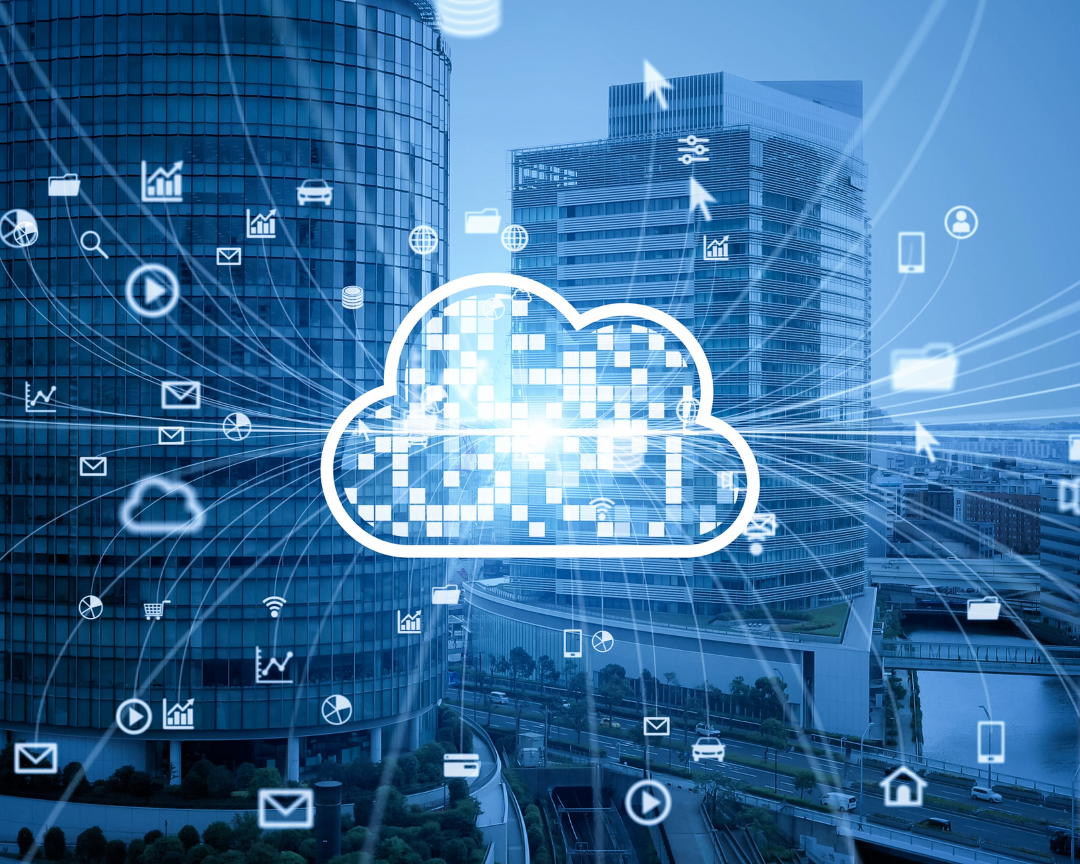
Dans le monde dynamique de l’informatique, Modern Endpoint Management (MEM) constitue un phare de transformation, redéfinissant la manière dont les organisations abordent la sécurité et la gestion des points finaux. Alors que nous nous éloignons des solutions traditionnelles sur site, MEM introduit une nouvelle ère dominée par les technologies cloud, l'automatisation et l'orientation utilisateur. Cet article explique comment MEM redéfinit les stratégies informatiques et ce que cela signifie pour les entreprises dans le contexte de la cybersécurité.
Points clés à retenir:
- Adoption rapide des solutions basées sur le cloud : mettre l'accent sur l'évolutivité et la flexibilité offertes par les technologies cloud dans la gestion des points finaux.
- Accent accru sur la cybersécurité : Comprendre le rôle crucial de mesures de sécurité robustes à l'ère des menaces numériques.
- S'adapter à la mobilité de la main-d'œuvre moderne : reconnaître les défis et les solutions liés à la gestion des points de terminaison dans un environnement de travail hybride.
Adopter la mobilité des travailleurs dans la gestion des points finaux
L'essor du travail à distance et l'utilisation d'appareils personnels à des fins professionnelles ont introduit de nouveaux défis dans la gestion des terminaux. Les solutions MEM doivent désormais répondre aux besoins d'une main-d'œuvre qui ne se limite plus au bureau, gérant et sécurisant une gamme croissante d'appareils. Cette tendance met en évidence la nécessité de solutions MEM suffisamment flexibles et robustes pour gérer les complexités des environnements de travail hybrides d'aujourd'hui.
Solutions basées sur le cloud : flexibilité et évolutivité pionnières dans la gestion des points finaux
MEM révolutionne la gestion des points de terminaison grâce à l'adoption de technologies basées sur le cloud. En 2023, nous avons assisté à une évolution significative vers ces solutions, offrant une évolutivité et un contrôle centralisé sans précédent, et nous pensons que leur importance et leur demande continueront de croître. Avec l'adoption croissante des outils de gestion unifiée des points de terminaison (UEM) basés sur le cloud , les entreprises trouvent de nouvelles façons de s'adapter rapidement aux besoins changeants des lieux de travail modernes. Ce changement souligne le rôle essentiel des solutions cloud dans la gestion moderne des points de terminaison.
Avantages des solutions basées sur le cloud :
économies de coûts
Coûts d'infrastructure et d'exploitation réduits : le cloud computing réduit le besoin d'investissements importants en matériel et en logiciels, tout en minimisant les coûts de fonctionnement des centres de données sur site.
Modèle de tarification à l'utilisation : les services cloud fonctionnent souvent sur la base d'un abonnement, permettant aux entreprises de payer uniquement pour les ressources qu'elles utilisent, ce qui peut réduire considérablement les dépenses informatiques globales.
Facilité de déploiement
Mise en œuvre rapide et évolutivité : les solutions cloud peuvent être rapidement déployées et facilement adaptées pour répondre aux besoins de l'entreprise, permettant une réponse plus rapide aux changements du marché.
Accessibilité et collaboration : les services cloud offrent l'avantage de l'accès à distance, facilitant la collaboration entre les équipes, quelle que soit leur localisation.
Mises à jour et innovation en temps réel
Mises à jour automatiques des logiciels : les fournisseurs de cloud mettent régulièrement à jour et mettent à niveau leurs services, garantissant ainsi que les entreprises ont accès aux dernières fonctionnalités sans intervention manuelle.
Accès aux technologies de pointe : les services cloud offrent aux entreprises la possibilité de tirer parti de technologies et d'innovations avancées sans investissement important dans du nouveau matériel ou des logiciels.
Applications concrètes des solutions modernes de gestion des points de terminaison
Dans la pratique, Modern Endpoint Management s’incarne à travers des solutions avancées telles que Microsoft Intune /Autopilot, Citrix Endpoint Management et VMware Workspace ONE. Chacune de ces plateformes illustre les principes du MEM en action :
Microsoft Intune , faisant partie de la suite Enterprise Mobility + Security (EMS) de Microsoft (y compris Autopilot), Intune est un service basé sur le cloud axé sur la gestion des appareils mobiles (MDM) et la gestion des applications mobiles (MAM). Il permet aux organisations de gérer les appareils et les applications utilisés par leur personnel tout en garantissant la sécurité de leurs données. Intune est particulièrement populaire pour son intégration transparente avec d'autres services Microsoft et son ensemble complet de fonctionnalités permettant de gérer les points de terminaison mobiles et de bureau.
Citrix Endpoint Management se distingue par sa capacité à fournir des fonctionnalités étendues de gestion des appareils mobiles et prend en charge un large éventail de types d’appareils et de systèmes d’exploitation mobiles. Il est connu pour ses fonctionnalités de sécurité performantes, notamment la gestion des applications mobiles et une passerelle mobile sécurisée. Citrix Endpoint Management s'intègre bien aux autres produits Citrix, ce qui en fait un choix privilégié pour les entreprises utilisant déjà les solutions Citrix pour la virtualisation ou la mise en réseau.
VMware Workspace ONE est une plateforme d'espace de travail numérique basée sur l'intelligence qui combine les fonctionnalités MDM et MAM. Workspace ONE est connu pour sa prise en charge étendue de différents types d'appareils, notamment les smartphones, les tablettes, les ordinateurs portables et les ordinateurs de bureau. Il fournit une plate-forme unique pour gérer tous les points de terminaison et offre un ensemble robuste de fonctionnalités pour l'automatisation, la sécurité et la personnalisation de l'expérience utilisateur.
L'intégration de ces solutions dans la stratégie MEM d'une organisation améliore non seulement la sécurité et la conformité, mais élève également l'efficacité opérationnelle globale et l'expérience utilisateur.
Donner la priorité à la cybersécurité dans un monde numérique
Dans le paysage numérique actuel , la cybersécurité est plus critique que jamais. À mesure que MEM évolue, l’accent est mis davantage sur les mesures de sécurité . La sécurité des terminaux et l'intégration de logiciels de sécurité avec des consoles unifiées deviennent au cœur des stratégies MEM. Il devient essentiel de sensibiliser le personnel à la cybersécurité pour renforcer les défenses contre les cybermenaces sophistiquées.
Menaces émergentes et solutions MEM
Le paysage de la cybersécurité est en constante évolution et de nouvelles menaces émergent régulièrement. Certaines des dernières menaces en matière de cybersécurité incluent des attaques sophistiquées de ransomwares, des campagnes de phishing et des menaces persistantes avancées (APT). Ces menaces deviennent de plus en plus complexes et difficiles à détecter, exploitant souvent les vulnérabilités des systèmes de sécurité traditionnels.
- Détection et réponse améliorées : les solutions MEM incluent désormais souvent des fonctionnalités avancées de détection et de réponse des points finaux (EDR). Les outils EDR assurent une surveillance en temps réel et une réponse automatisée aux menaces, permettant une identification et une isolation plus rapides des attaques.
- Intégration de l'intelligence artificielle : de nombreuses solutions MEM modernes intègrent l'IA et l'apprentissage automatique pour prédire et identifier de nouvelles menaces en fonction de modèles et d'anomalies.
Modèle Zero Trust dans MEM
Le modèle de sécurité Zero Trust fonctionne sur le principe « ne jamais faire confiance, toujours vérifier » . Ce modèle est de plus en plus adopté dans les stratégies MEM visant à renforcer la sécurité, en particulier dans l'environnement actuel où le modèle de sécurité basé sur le périmètre n'est plus suffisant.
La mise en œuvre du modèle Zero Trust dans MEM implique :
- Vérification d'identité : Zero Trust nécessite une vérification d'identité stricte pour chaque utilisateur et appareil tentant d'accéder aux ressources d'un réseau. Cela implique souvent une authentification multifacteur (MFA) et une gestion rigoureuse des identités.
- Accès au moindre privilège : ce principe garantit que les utilisateurs et les appareils disposent uniquement des droits d'accès nécessaires pour effectuer leurs tâches, réduisant ainsi le risque de mouvement latéral en cas de violation.
Automatisation : améliorer l'efficacité de la gestion des points finaux
Au cœur de MEM se trouve la puissance de l’automatisation. En automatisant les tâches de routine telles que les mises à jour logicielles, les correctifs, les politiques et les configurations de sécurité, les organisations peuvent améliorer leur efficacité et garantir une protection continue contre les menaces émergentes. Cette évolution vers l'automatisation rationalise non seulement les opérations, mais réduit également la demande en ressources informatiques.
Explorer l’automatisation dans MEM:
- Processus et flux de travail automatisés : l'automatisation de la gestion des points finaux rationalise les tâches telles que les mises à jour logicielles et les contrôles de conformité, garantissant qu'elles sont effectuées de manière cohérente et efficace.
- Impact sur les équipes informatiques : l'automatisation permet aux équipes informatiques de se concentrer sur les tâches stratégiques en gérant les tâches de routine, augmentant ainsi la productivité et la satisfaction au travail.

Sécurité centrée sur l'utilisateur : équilibrer commodité et sécurité
À l’ère du Bring Your Own Device (BYOD) et du travail à distance, MEM redéfinit l’équilibre entre expérience utilisateur et sécurité. Les organisations cherchent désormais à créer des environnements dans lesquels les utilisateurs peuvent travailler de manière transparente sans compromettre l'intégrité et la confidentialité des données. MEM prend en compte les besoins et les préférences des utilisateurs finaux tout en maintenant des mesures de sécurité robustes. Trouver cet équilibre est crucial pour favoriser la productivité sans compromettre l’intégrité et la confidentialité des données.
Gestion unifiée des points de terminaison (UEM) : rationalisation de la gestion des appareils
MEM intègre souvent Unified Endpoint Management , offrant une plate-forme unifiée pour gérer les appareils traditionnels et mobiles. Cette consolidation simplifie l'administration, en fournissant une vue complète de l'environnement diversifié des points de terminaison d'une organisation et en rationalisant le processus de gestion.
Avantages de l’UEM:
- Conformité améliorée : les outils UEM peuvent automatiser l'application des politiques de conformité sur tous les appareils gérés, garantissant ainsi qu'ils respectent les normes réglementaires et les politiques organisationnelles.
- Efficacité et économies de coûts : en consolidant plusieurs outils de gestion en une seule solution, UEM peut réduire le temps et les ressources nécessaires à la gestion des points finaux, conduisant ainsi à une efficacité opérationnelle et à des économies de coûts.
Conclusion : Naviguer dans l'avenir de la gestion des points de terminaison
Le parcours vers une gestion moderne des terminaux est marqué par une évolution continue en réponse aux technologies émergentes et aux environnements de travail changeants. En gardant une longueur d'avance dans le domaine MEM, les organisations améliorent non seulement leur posture de cybersécurité , mais contribueront également à mettre en place une infrastructure informatique plus agile et réactive, prête à relever les défis de l'ère numérique.
En résumé, MEM est un élément essentiel du paysage informatique moderne, porté par les progrès de la technologie cloud, l'attention constante accordée à la cybersécurité et la nécessité de s'adapter à une main-d'œuvre mobile. En adoptant ces éléments, les organisations peuvent sécuriser leurs données, optimiser leurs opérations informatiques et offrir une expérience utilisateur transparente dans un monde de plus en plus numérique.
L'équipe de spécialistes de la gestion des points de terminaison d'Altanora peut vous aider à renforcer votre sécurité et à rationaliser vos opérations informatiques.





